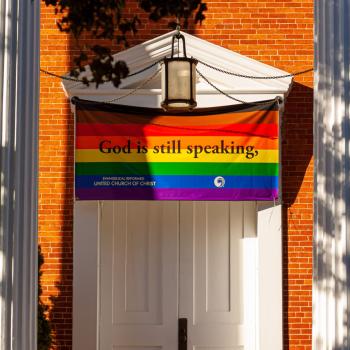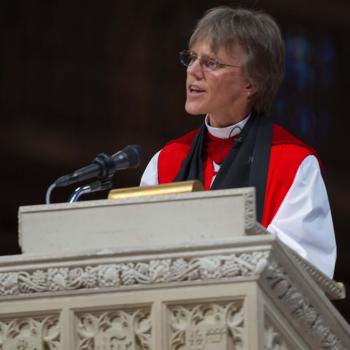“Grabbing for the gold (brass) ring,” has always sounded very American. The idea of unbounded opportunity and the willingness to exploit such opportunities has been near, if not central, to the American project. For generations, the United States was simply called “the land of opportunity,” and it seemed most people accepted this ascription at face value. In a very real way, this idea of a broad landscape of opportunity and the potential for personal fulfillment is what we know as “The American Dream.” Nevertheless, this idea of fulfilling one’s personal goals or ambitions in such a land has carried both positive and negative connotations throughout the years.
The American Dream: Positively and Negatively Understood
Positively, the American Dream has been simply understood as something like realizing one’s God-given potentials. Some potentials may relate to more innate features, like those grounded in one’s biology or “natural” endowments. Others are more contingent, like where or when one was born, or how and by whom one was raised or “nurtured.” The idea being that both innate features (sex, height, musculature, general physical health) and social features (race, class, home of origin) could work together for the individual’s benefit, given that the principles of the nation were correct and the system was properly constructed around them.
Minimally, the idea was that if there were deficiencies in either the natural or the nurtured, those deficiencies would not be fatal to the success of the individual. Again, so long as the principles were right and the system properly constructed. In other words, if there were innate disabilities or unfortunate social circumstances, the principles of the nation and the properly constructed system could compensate, to some degree, for inadequacies in both. The compensation would never be perfect, but it could be good enough.
Alternatively, however, the same American Dream has been negatively construed as something like: the suppression of common human decency and sense of community for the sake of individual success in what is effectively a “dog-eat-dog” capitalist world. 1980’s films like Wall Sreet attempted to popularize this socialist interpretation of The Dream (and did a pretty good job). On this view, the American dream is hardly more than an endless project of “climbing the corporate and social ladder,” regardless of who gets in the way and how one prostitutes oneself to do so. However, the difference between both connotations of The Dream is not necessarily found in the principles of the nation or the system built around it, but rather in the approach the individual takes to them.
Either way, we could say the notion of fulfilling one’s dreams is at the heart of The American Dream. Here you can do anything your heart desires, regardless of who you are or what circumstances you came from. It is a narrative that many immigrants to America would declare as both achievable in the abstract and as having been achieved in the concrete. The only thing required for success, ultimately, is the will to reach out and grasp the ring of gold.
Counter-Narratives and The American Dream
Of course, this aspect of the American dream has been critiqued quite rabidly in recent decades, most vociferously by critical theorists of various social types: race, gender, ability/disability, sex, etc. The basic challenge being that while America is a land of opportunity (positively or negatively construed), the opportunities are only for those who bear certain social features. It is a land of limited opportunity based on certain social identities one possesses or fails to possess.
In the past there was no doubt about this. It is a historical fact that must be granted and must not be denied lest one abandon all moral sense. In fact, if this were not the simple case of history, the current political counter-narrative would never get off the ground. All propaganda ultimately rests on some bedrock of facts.
Today, however, it is far less clear as to who does not have access to the landscape of opportunities than it was in the past. Moreover, the critical theory framework that permeates the culture often assumes it must be a certain type of group that has the opportunity (or privilege) and a certain kind or type of group that does not. It is claimed, for example, that those who still have the unbounded opportunities are, or must be: white (meaning, broadly speaking, of European heritage), Christian (meaning, almost always, conservative Christian), male (meaning something like acting masculinely) and heterosexual (meaning, well, heterosexual). Opportunities in America are only for those who fit this sociological profile and not for anyone who does not.
The result of this limited landscape of opportunity is, according to critical theorists, the marginalization of all other individuals not bearing these specific social properties. That marginalizing process itself leads to an increased fragmentation among non-white, non-conservative Christian, non-biological male/masculine, and non-heterosexual groups. This problem of multiple divisions among “oppressed” groups compelled the now famous legal scholar, Kimberle Crenshaw, to develop a novel concept to apply to the phenomenon. The term she coined for that concept was “Intersectionality.” Intersectionality, a now hackneyed term, originally did a reasonable job of highlighting the overlap of certain social features in particular persons (for Crenshaw especially it was the overlap between being “black” and “female”), and how that leads to impoverished social conditions. People who displayed certain kinds of social intersections were lost in a society that could not see them.
However, this manner of looking at American culture, of carving society up according to mentally constructed, yet somehow “real,” features of human persons, has now become the default mode of thought for most Americans. This includes most American Christians. And so, in nearly all our dialogue today, we cannot speak of “Americans” as a group, or even of “Christians” as a group without also mentioning additional predicates related to various social categories. And this is regardless of the merits or demerits of critical theory itself, or of particular views like Crenshaw’s.
And so when we speak, we must speak of “gay” Christians and “straight” Americans; of “white” Christians and “black” Americans; or of “cis” Christians and “trans” Americans, and so on and so forth, almost ad nauseam. Our social features now dominate over any other identifying feature we may possess, like “being made in the image of God” or “being a citizen of a particular nation who adheres to the principles of that nation” or of even “being a moral person.”
Social Theory and Morality
Of course, this carving up of humanity by social designator presupposes the absence of any kind of “essentialism” about human persons (like a human nature or a shared, transcultural identity). Further, as a morally inept tool of analysis, it says little to nothing about the inner character of individuals. One’s social features are primary, if not the source of any morally praiseworthy or reprehensible attitude or act. A black individual would, in this sense, be moral in virtue of his thinking and acting “blackly,” or a gay man praiseworthy in virtue of his thinking or acting “gayly.” For now, although it is entirely contingent upon historical conditions, white people who think “whitely” would not be praiseworthy, but worthy of condemnation for thinking as such. The same would go for those who think “masculinely” or “cis-genderdly.”
Personal morality, both in value and action, is simply downstream from one’s social identity. The social group determines how any individual within it should act. This is not anything atypical in human history, nor is it something that is in itself undesirable. But what is atypical is the prescribing of certain moral attitudes or norms to people based on seemingly irrelevant social features. Yet this is at the heart of critical theory, which has always maintained that it is social classes, and one’s social location, that generate people’s moral values and duties, as well as their religious inclinations and beliefs. It is not prior religious or theological commitments, or an innate awareness of a transcendent moral law, that shape men’s souls; it is their social circumstances.
And so virtue and vice are no longer a product of the individual will, or a mind conformed to an ideal or mis-formed to one. Virtue and vice are seen to be determined more and more by one’s social identity and the contingent, social life of the group. Who ultimately determines which social categories are “good” or “bad”, “progressive” or “regressive,” is, at bottom, a matter of who sits in the seat of power to make such determinations.
The Church in A Critical Theory World
The idea of the American dream as “the ability to realize one’s full potential, given certain innate features and regardless of one’s social features, so long as one musters the will to do so;” versus the American dream as “the ability to realize one’s full potential, given certain innate features, yet dependent on social features and regardless of how much will one musters” have come to loggerheads in our times. This is one of the fundamental, ideological clashes internal to American society today. The former group is often accused of adhering to a principle known as “meritocracy.” The latter group, the one doing the accusing, sees itself as advocating a new type of critical social justice, one aimed at ensuring that all domains of culture explicitly take into account the social features of the individual.
This clash is further indicative of two very different ways of looking at life generally, one emphasizing far more the role of the individual will, the other the determinative forces of society; or the role of the “collective” as opposed to the “member.” It is also a clash that the Church, being a church in culture, finds itself utterly embroiled in. But not only that. It is a conflict of vision (cf. Thomas Sowell) that many Christians seem unaware of, even if everyone at least implicitly espouses one or the other view.
And so we find ourselves locked in a battle between two kinds of Christians: those who assume, whether they are aware of it or not, a critical theory approach to culture, and those who do not. Again, regardless of whether they are aware or not. Moreover, these two competing views are applied to the Christian life itself. Those who espouse the view that America is the land of opportunity for all, so long as one has the will to achieve, tend to reject the need to divide the Church up into social categories. Instead they focus on the individual person and his or her willingness to pursue the Christian life. They will tend not to think person “x” needs some kind of special help given their distinct social features. They will tend to think person “x” needs the same kind of help person “y” needs given their common sin nature.
Alternatively, those indoctrinated in critical theory, will carve up the local church and seek to redress historical wrongs by privileging Christians who possess certain social features or who fall into certain social categories. The corollary to this is to remove privilege from those who, in the past and still today, possess those social features considered “oppressive” or “dominant.” We see this most poignantly today in the debates surrounding homosexuality or the roles of men and women in the Church. The critical theory Christian wants to focus on certain privileges of the Christian life they feel have been withheld from them or from those possessing the social features associated with the historically underprivileged they are advocating for.
Take homosexuality as an example. The first group sees the problem of homosexuality as one relating to a particular kind of struggle some Christians have with a sin nature. This sin nature, however, is something they share with other Christians, even if those other Christians do not have this particular struggle. The emphasis is on the shared sin nature, not the social identity of the person. Perhaps it should be pointed out, that a “sin nature,” is something far more abstract and metaphysical than any social feature, which is far more concrete and even tangible in some way.
The second group, however, sees homosexuality as its own identity, something that supervenes onto, or perhaps supersedes, the Christian identity or the sin nature. This “gay” identity places the homosexual man or woman into a separate category of person. One is not merely a sinner or saint (or, per Luther, both at the same time), one is a “gay” sinner or a “gay” saint. Persons falling into this category, subsequently, are said to be in need of more privilege. Being in need of more privilege, these Christians must then be approached differently than their non-gay Christian counterparts. The same could be said of men and women, blacks and whites, etc. For these critical theory Christians, talk of “shared” natures often rings hollow, as it diminished the idea of the social identity and the historical marginalization associated with that identity.
What is Really Killing Evangelicalism: The Sin of Ambition
The aim of this article is not to say that social differences don’t matter. They do. They are just not fundamental. Nor does this article deny that some kinds of people have experienced real oppression and grave injustice given their social location or features. They most certainly have! It is also not to argue for limiting opportunities to anyone based on social location or social features per se. Although, ultimately, one would have to look at the Bible, not the culture, to determine if there are some opportunities unavailable to us given our social location or some social feature we might possess (or fail to possess).
When we look at Scripture, for example, we see that there clearly are restrictions on people given their social features. Just consider the requirements for elders and deacons that Paul lays out in 1 Timothy 3. Most of the requirements are of a strictly moral nature. But the fact that Paul specifically designates elders and deacons as “husbands,” is itself a purely social feature. Being a husband is neither an innate feature, nor a moral one. The kind of husband an elder or deacon has to be is a moral feature, but just being “husbands” is entirely social. Others qualifications border both the moral and the social, like “being well thought of by outsiders.” (1 Tim 3:7)
Nevertheless, what I am trying to highlight here is a moral problem that I think runs through both approaches to the Christian life (even if I feel the first approach is far more biblical than the latter, I still see a potential deficiency in it). The problem I see that drives much of the debate between the critical theory Christian and the more traditional (for lack of a better term) Christian is the underlying vice of ambition. After all, what seems to be going on here is a jockeying for position, a rearranging of power and privilege, so that some who formerly were not ahead in society can now get ahead in Christian society. The noble goal, of course, is that same old goal proffered as The American Dream, i.e., the fulfillment of one’s personal potential, the grasping of the gold ring!
The fulfillment of our personal potential, however, is not a Christian goal. Unless of course we mean it in a very, VERY, qualified sense. That would be something like: our personal potential as Christians is to become more like Christ (the internal goal), and to participate in the discipling of the nations (the external goal). However, our personal potential and its actualization in either area, as far as the Gospel is concerned, is not reliant on social circumstances, or the principles of a particular nation, or even the individual will of man. The actualization of any potential in the Christian life is reliant entirely on God’s grace and His designed purpose for us. Thus the traditional “meritocrats” and the “critical theory Christians” are both in trouble if their hope for fulfilling personal potential lie anywhere else.
How Ambition Kills Each Group
In a book that I read so you don’t have to (cf. Larry Elder), After Whiteness: Education in Belonging, critical theory theologian Willie James Jennings makes one, fairly incisive point about Christian education:
[There] is a pedagogical vision caught between an isolating individualism and a sick intellectual performativity. Between these two problems three distorted forms of educational design develop: designs for attention, affection, and resistance. Together they press us into a soul-killing peformativity aimed at the exhibition of mastery, possession, and control with the tacit assumption that this ongoing work of exhibition illumines talent and the capacity for leadership.
After Whiteness, 18
While Jennings ascribes this kind of meritocratic individualism to “white, self-sufficient masculinity” throughout the book, I would simply call it for what it is– ambition. Ambition is a vice common to all men (and women), regardless of any particular social features, racial or otherwise. The fact that Jennings relates ambition to “whiteness” may very well be a token of his own ambition. But I digress.
Still, the danger for the first group of Christians, a danger that has been rightly critiqued for some time now in the Evangelical church, is the reliance on skill and will to lead the Church and to model the Christian life. We have seen too many senior pastors or ministry leaders elevated because of their great skill and indefatiguable will to lead, yet who have tarnished the Evangelical image due to their great lack in holiness. And so the first group of Christians must be vigilant about who is really in charge of the congregation or local church; why have they been chosen as the senior pastor or ministry leader? Is it based in skill and ambition, or is it grounded in humility and holiness?
As to the second group, the group seeking out privilege and power under the guise of justice, the problem seems more obvious. The entire game for the critical theory Christian is explicitly about redistributing power and authority. It is a fairly direct temptation to be ambitious, to grasp the golden ring that exists within the American Church. It is the same revolutionary impulse to upset the ruling regime and take hold of the reins of history that Marx thought was ripe in the proletariat and that Milton placed in Satan himself.
Yet power and privilege are due to no one, unless they have been first called by God, and then seek to be crucified daily with Christ. Many critical theory Christians sound like James and John when they came to Jesus and asked that He grant them seats of glory both at His right and His left:
35 Then James and John, the sons of Zebedee, came to him. “Teacher,” they said, “we want you to do for us whatever we ask.”
36 “What do you want me to do for you?” he asked.
37 They replied, “Let one of us sit at your right and the other at your left in your glory.”
Jesus reply was not quite what they desired to hear:
38 “You don’t know what you are asking,” Jesus said. “Can you drink the cup I drink or be baptized with the baptism I am baptized with?”
Of course, we know that Jesus eventually did grant James and John their request, but not because they were oppressed Jews and certainly not because they had mastered anything in their own strength and virtue. They were granted glory because they did share in Christ’s baptism and drank the cup of His suffering.
And this ultimately is the real qualification for all those who would lead the Church of Christ and be glorified in the righteous power of God. It is the antithesis of ambition, the inverse of worldly politicking over position and power. It can be summed up in one, simple question: “How much are you willing to suffer for the Gospel of Jesus Christ?” The one who answers in the same way as the white, heterosexual, cis-gendered theologian and martyr Dietrich Bonhoeffer or the black African, male martyr St. Charles Lwanga, or the white, female missionary Mary Slessor, to the one who can answer as these answered, to them shall be granted no golden ring, but an imperishable crown.


















